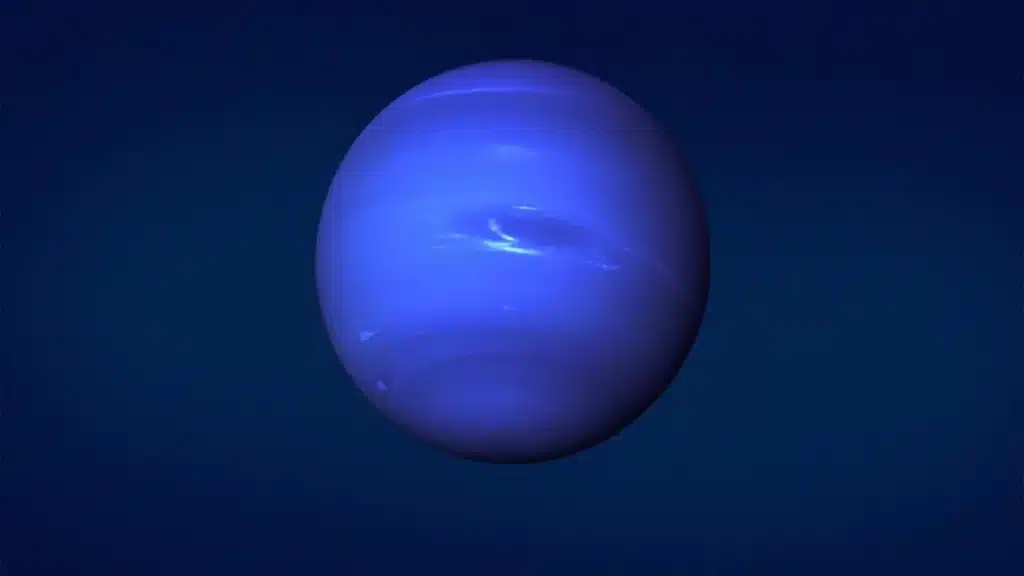
On September 23rd, 1846, the planet Neptune was discovered for the first time by human beings.
There’s no better day to learn some fun facts about the eighth planet from the sun, and the windiest planet by far in the solar system.
Read on to find out why diamond rains on Neptune, how many moons this planet has, and just how fast the supersonic winds blow.
Want to explore more deep space? While we can’t visit Neptune anytime soon, you can get pretty close to space exploration here on Earth. Check out our family-friendly guide to Kennedy Space Center.
50 Fascinating Facts about Neptune:
1. Neptune formed around 4.5 billion years ago.
2. Neptune orbits our Sun, which is a star.
3. Neptune used to be closer to the Sun than it is now, but it started drifting away from it around 4 billion years ago.
4. Neptune is the 8th planet from the Sun and the last of the planets in our solar system. (Pluto is further away, but it is considered a dwarf planet.)
5. Until the orbit of Pluto was understood as a dwarf planet, Neptune was considered the second farthest planet from the Sun. Today, it’s understood that Neptune is the most distant planet from the sun in our solar system.
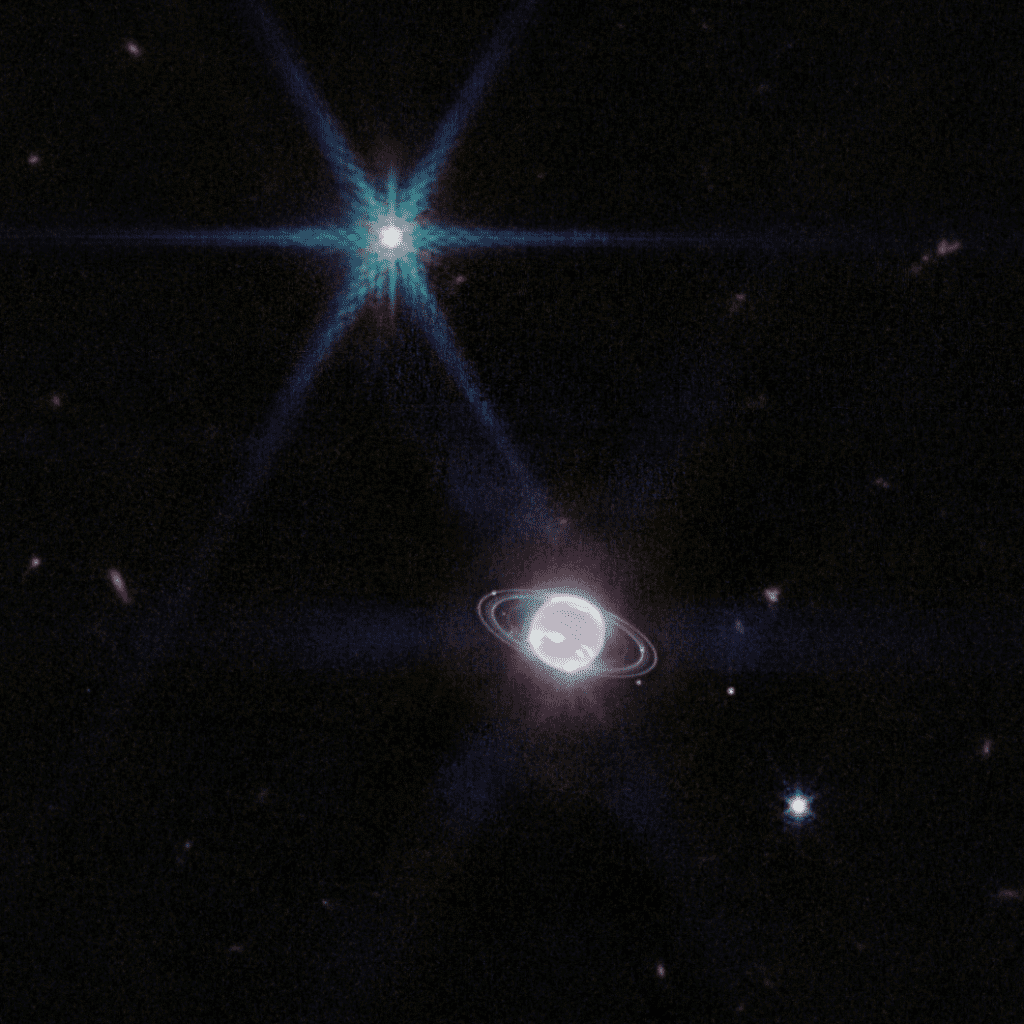
6. If you stood on Neptune, the Sun would appear 900 times fainter in the sky than it does on Earth. The sun is so small and faint that high noon on Neptune is similar to a dim twilight on Earth.
7. Neptune is about 2.8 billion miles from the sun. That’s more than 30 times as far from the sun as Planet Earth is.
8. It would take a 12 year space journey to get from Planet Earth to Neptune.
9. Neptune is the fourth largest planet in the Solar System.
10. Neptune has a radius of about 15 thousand miles, and a diameter of about 30 thousand miles.
11. Neptune is four times larger than the size of the earth.
12. If Earth were a large apple, Neptune would be the size of a basketball.
13. It is the smallest of the “gas giants”. (The other gas giants are Neptune, Uranus, Saturn, and Jupiter).

14. Its only neighbor is Planet Uranus.
15. Both Neptune and Uranus are called “ice giants” since they have different compositions than Saturn and Jupiter.
16. Neptune (and Uranus, the other “ice giant”) is made of a thick fog of water, ammonia, and methane over a solid center core.
17. Uranus and Neptune are near twins in size and composition. However, Neptune is slightly smaller and denser than Uranus.
18. The planet doesn’t have a solid, terrestrial surface since most of its mass is made of gases.
19. Neptune’s atmosphere is made up of hydrogen, helium, and methane. It’s thick, windy, dark, and cold.
20. The solid center of Neptune is about 1.5 times the size of Earth.
21. Neptune has six rings, but they’re very faint and hard to see. They are actually clumps of dust and debris likely formed by the gravity of a nearby moon.

22. The planet Neptune is named after the Roman god of the sea. (In Greek mythology, he is known as Poseidon.) The planet was probably given this name due to its beautiful blue color.
23. Neptune’s blue color is believed to be influenced by the presence of methane in its atmosphere.
24. A Neptunian day is 16 hours long. That means it takes 16 hours to rotate once.
25. Neptune spins rather quickly and has the third shortest “day” of any planet in the solar system.
26. One Neptunian year is 165 Earth years long. That means it takes Neptune 165 Earth years to go around the sun just one time. That’s a long year!
27. The surface gravity of Neptune is 1.14 times the gravity on Earth. If you could actually walk on Neptune, you would feel only a little heavier than if you were walking on Earth. If you weighed 100 pounds on Earth, you would weight 114 pounds on Neptune.
28. Neptune has 14 moons.
29. Each of Neptune’s moons are named after sea gods and nymphs from Greek mythology.
30. The largest moon of Neptune is called Triton.
31. Triton is the seventh-largest known moon of any planet in the solar system.
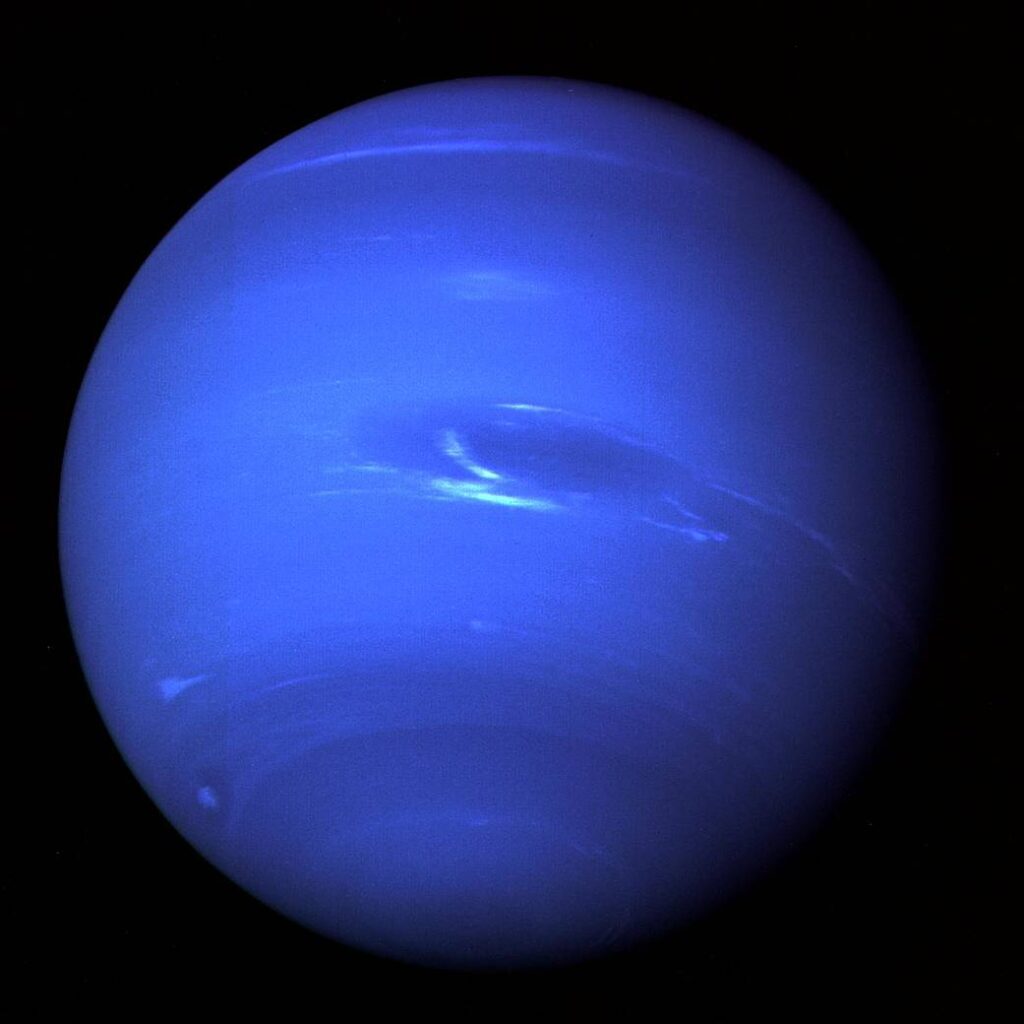
32. Neptune’s moon Triton is even bigger than the dwarf planet Pluto.
33. Some believe that the moon Triton is actually a dwarf planet that was captured by the gravitational pull of Neptune.
34. Triton is the only large moon within our solar system that circles its planet in the opposite direction of the planet’s rotation.
35. Triton is also the coldest known object in our solar system. The average temperature on the surface of Triton is -391 degrees Fahrenheit.
36. Neptune is the only planet in our solar system not visible to the naked eye. You need a telescope to see it.
37. Neptune was observed in 1613 by Galileo Galilei but he thought that he observed a star, not a new planet, and failed to find it again.
38. Its existence was first predicted by mathematical calculations before it was actually discovered.
39. Uranus was the greatest factor in the discovery of Neptune. Astronomers were calculating the orbit of Uranus and observed that the planet wasn’t following their models. This forced astronomers to conclude that another undiscovered planet might be the reason behind the inconsistencies.
40. Neptune was finally discovered in 1846 by Urbain Le Verrier, John Couch Adams, and Johann Galle.
41. In 2011 Neptune completed its first 165-year orbit since its discovery in 1846.
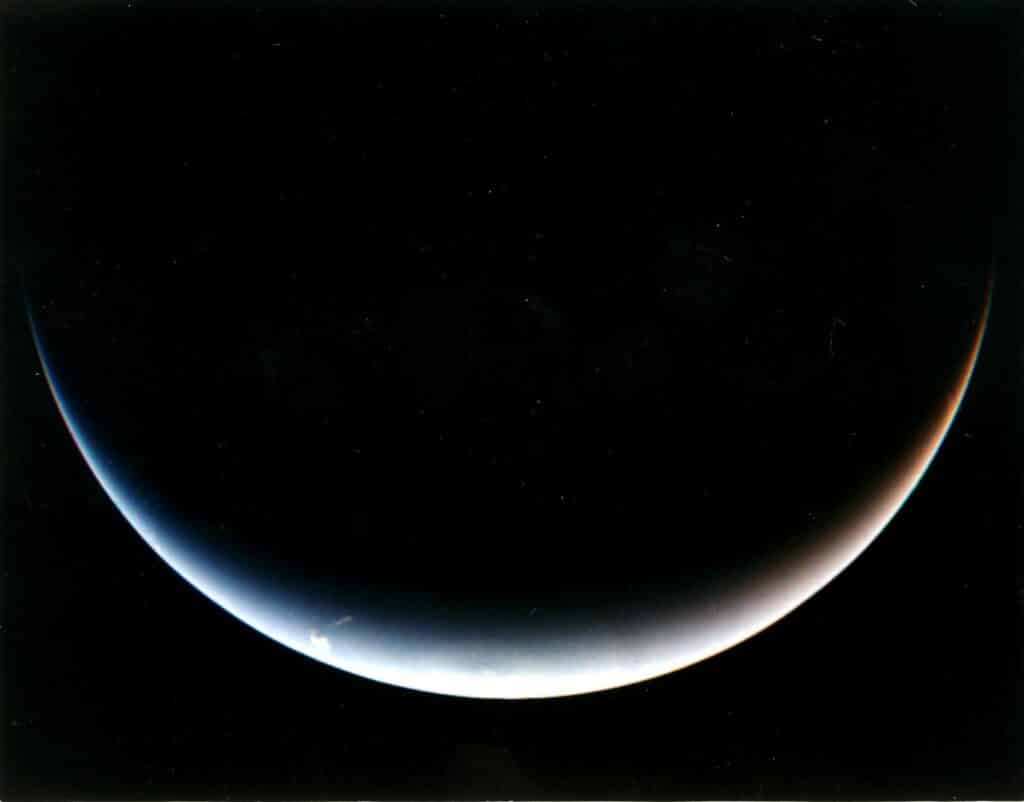
42. The only spacecraft to have visited Neptune up close is the Voyager 2. It flew past in August of 1989 on its way out of the solar system.
43. Earth-based space observatories and the Hubble Space Telescope have taken many images of Neptune in the past three decades. The Webb telescope’s views of Neptune, taken in July of 2022, provided an unprecedented glimpse at the planet in infrared light.
44. Neptune is the windiest planet. Wind speeds on Neptune are the fastest recorded in our Solar System.
45. Winds on Neptune can reach up to 1,324 miles per hour. It has the strongest winds of any planet.
46. Neptune’s strong winds are five times faster than the fastest winds on Earth
47. The winds on Neptune are supersonic, meaning they break the sound barrier.
48. The Great Dark Spot was a huge spinning storm in the southern atmosphere of Neptune which was about the size of the entire Earth. Winds in this storm were measured at speeds of up to 1,500 miles per hour. These were the strongest winds ever recorded on any planet in the solar system.
49. Other dark spots observed on Neptune are believed to be large storms, sometimes the size of Planet Earth itself.
50. Neptune cannot support life as we know it.
51. Neptune’s average surface temperatures are around-353 degrees Fahrenheit.
52. Despite it’s extremely cold temperatures, it is not the coldest planet. That title belongs to Uranus.
53. Scientists have theorized that there might be a superhot water ocean under the cold clouds of Neptune that doesn’t boil away due to the high pressure that locks it inside.
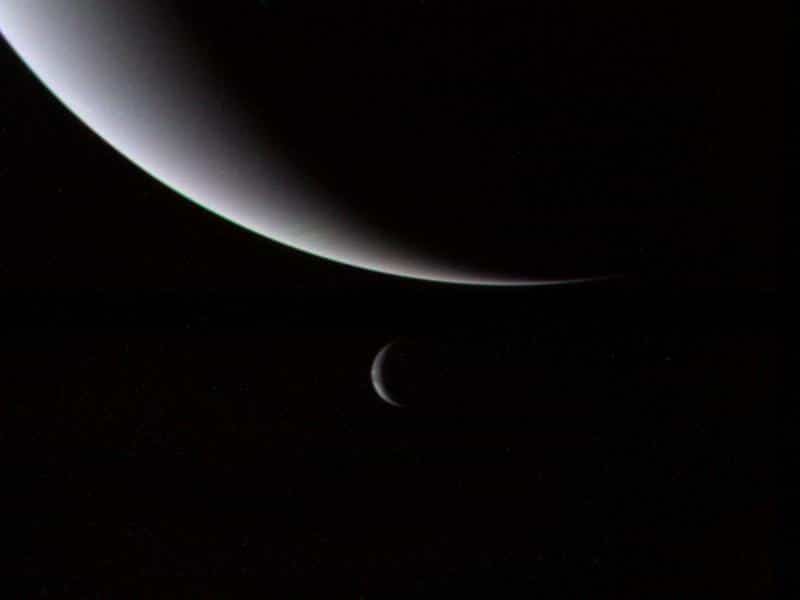
54. Neptune has a powerful magnetic field that is 27 times stronger than Earth’s.
55. Light from Neptune reaches us in around 4 hours.
56. Scientists believe that diamond rain is found on both Uranus and Neptune, about 8,000 kilometers below the surfaces of these planets. It’s thought to be created from mixtures of hydrogen and carbon, squeezes together at an incredible pressure.
57. There are other names for Neptune in different languages. In Chinese, Vietnamese, Japanese and Korean, the planet’s name was translated as “sea king star” while in Mongolian it is called Dalain Van. In modern Greek, the planet’s name is Poseidon while in Māori the planet is called Tangaroa, the name of the Māori god of the sea.
58. Neptune is a common feature in pop culture. In the “Star Trek: Enterprise” pilot episode, “Broken Bow,” viewers learn that at warp 4.5 speed, it is possible to fly to Neptune and back to Earth in six minutes.
Frequently Asked Questions About Neptune:
Does Neptune Have Rings?
Neptune does have six rings, but they’re very faint and hard to see. They are actually clumps of dust and debris likely formed by the gravity of a nearby moon.
Does Neptune Have Gravity?
Yes, Neptune has gravity. The surface gravity of Neptune is 1.14 times the gravity on Earth. if you could actually walk on Neptune, you would feel only a little heavier than if you were walking on Earth. If you weighed 100 pounds on Earth, you would weight 114 pounds on Neptune.
Does Neptune Have Moons?
Yes, Neptune has 14 moons. Each of Neptune’s moons are named after sea gods and nymphs from Greek mythology.
The largest moon is called Triton. Triton is the seventh-largest known moon of any planet in the solar system. It is even bigger than than the dwarf planet Pluto. In fact, some believe that it is actually a dwarf planet that was captured by the gravitational pull of Neptune.
Triton is also the only large moon within our solar system that circles its planet in the opposite direction of the planet’s rotation.
Triton is the coldest known object in our solar system. The average temperature on the surface of Triton is -391 degrees Fahrenheit.
Does Neptune Rain Diamonds?
Yes, scientists believe that diamond rain is found on both Uranus and Neptune, about 8,000 kilometers below the surfaces of these planets. It’s thought to be created from mixtures of hydrogen and carbon, squeezes together at an incredible pressure.
Does Neptune Have Rings?
Neptune does have six rings, but they’re very faint and hard to see. They are actually clumps of dust and debris likely formed by the gravity of a nearby moon.
Does Neptune Have Gravity?
Yes, Neptune has gravity. The surface gravity of Neptune is 1.14 times the gravity on Earth. if you could actually walk on Neptune, you would feel only a little heavier than if you were walking on Earth. If you weighed 100 pounds on Earth, you would weight 114 pounds on Neptune.
We hope you enjoyed these interesting facts about the incredible Blue Planet called Neptune. Here are some books to learn even more about this fascinating place in space:
Related Articles:
25 Interesting Facts About Comets For Kids
75 Amazing Cheetah Facts Your Kids Will Love
50 Mind-Blowing Monkey Facts Your Kids Will Love
50 Mind-Blowing Snow Facts Your Kids Will Love
50 Fun Thanksgiving Facts For Kids
50 Mind-Blowing Mars Facts for Kids
Emperor Penguin Facts for Kids
Calie Herbst, Editor-in-Chief of Milwaukee With Kids, has spent over a decade combining her experiences as a parent of three to create a hub for Milwaukee’s family adventures.
Her decade-long teaching career in Milwaukee Public Schools and academic background, including a Master’s in Teaching from Marquette University and dual B.A.s in Sociology and Spanish from the University of Wisconsin – Madison, fuel her passion for inclusive and engaging family content.
Calie is also a recognized voice in local media, contributing to WISN Channel 12 News, WTMJ Wisconsin Morning News, Fox 6’s Real Milwaukee, and B93.3.
Discover more about Calie’s journey and editorial approach on her About Page and Editorial Policy Page.









